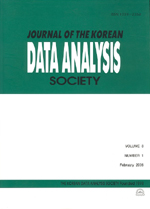Socio-Economic Inequality in Survival of Percutaneous Coronary Interventions
- 한국자료분석학회
- Journal of The Korean Data Analysis Society (JKDAS)
- Vol.16 No.4
-
2014.081745 - 1753 (9 pages)
- 5

The rate of percutaneous coronary interventions (PCI) is rapidly increasing but their long-term survival and the contribution of the socio-economic position (SEP) and the quality, have not been evaluated in Korea. The aim of this study was to examine differences in the long-term survival rates of PCI patients according to SEP, focussing on the role of the quality of PCI. A respective observational follow up study was done in 1001 patients diagnosed from October to December 1997 at 25 centers in Korea. Income status and health-care utilization were assessed with National Health Insurance data and survival during 1997-2003 was identified by death certificate. Hazard ratios (HR) and 95% confidence intervals (CI) were derived from Cox proportional hazards regression. The high-income group had higher rates of survival than the low-income group. The adjusted HR of the low-income group were consistently elevated in reference to the high-income group (2.89, 95% CI: 1.75-4.79). The lower annual PCI volume group had larger adjusted HR than the higher annual PCI volume group (1.94, 95% CI: 1.32-2.86). This Korean study revealed similar patterns of association as previously reported for other countries and health care systems. PCI volume in hospital as a proxy indicator of quality of PCI procedure contributes to longer survival times, regardless of SEP.
1. Introduction
2. Methods
3. Results
4. Discussion
5. Conclusions
References
(0)
(0)